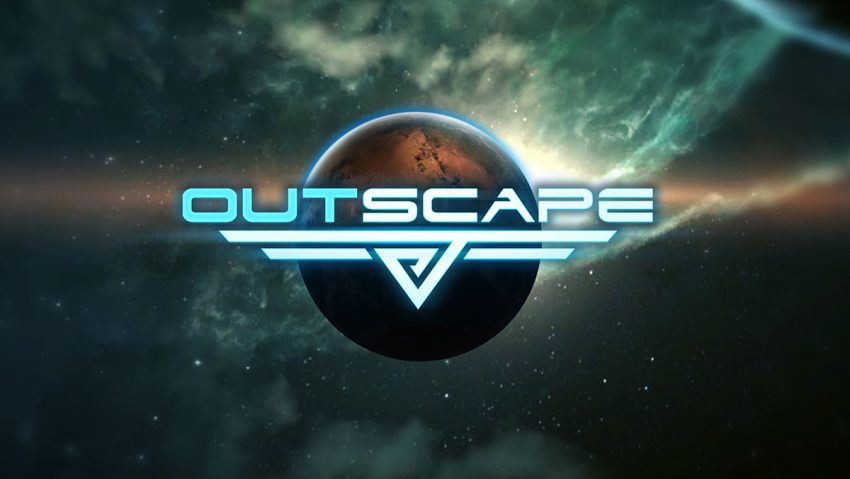A brief guide on setting up your corner of the xyand not being squashed by established players.
In MMO parlance, the phrase “ganking” has expanded from its original meaning of a gang kill to general situations where a small player is killed by a large one, often with little or no means of fighting back. In Outscape, new and veteran players inhabit the same galaxy, and will likely cross paths sooner or later, potentially killing new empires before they’ve truly begun. This guide is intended to offer advice to newer players to help them avoid crashing and burning early on (as this author did first time around!), with a particular focus on setting up and defending interplanetary and interstellar lines of communication.
How to (hopefully) Stay Alive More in the Galaxy
- Remember the Golden Rule. This first rule has been well-established in other space-themed MMO communities such as EVE Online and Elite Dangerous, but is equally relevant here. The Golden Rule is as follows:“Never fly what you can’t afford to lose.”
In Outscape, any damage or destruction of your fleets or structures is permanent, and will take time and resources to replace. Would losing that convoy wreck your entire game if it was shot down? If the answer to that question is “Yes”, then it’s probably best not to launch those ships, unless you’re certain that you can defend them. Players should also make sure to keep reserves of resources available to repair and replace damaged ships, in case the worst should happen. These include farsu and ziryl for ship construction, limbalt to use as ammunition and olzine to fuel your fleets.
Of course, it will be necessary to take some risks, particularly in the early game. Grabbing that system early on at the expense of your opponent could give you a massive advantage, but not if you over-extend yourself in the process. Only take what you can hang onto, with ships you can afford to replace! - (You Can’t) Avoid natural choke points. This is a staple of MMO anti-ganking advice, as such points are natural ambush sites for opposing players (or gangs of players). Unfortunately, travel in Outscape is always between fixed points (either planets or star systems), meaning few alternative routes are available. This means ships should…
- Travel in Armed Convoys – almost immediately, players will have to deal with the logistical problems of moving colonists and resources between planets, and later between different star systems. When doing so, ships should not venture alone. Lone ships, and in particular lone unarmed ships such as freighters are easy pickings for any passing pirate. Even the weakest Sparrow frigate can wipe out a full fleet of 18 vessels, if that fleet has no guns of its own to fight back with! Instead, players should form their logistics and colonizing ships into armed convoys. This has several benefits.
Including combat ships will deter any would-be attackers, particularly NPC Pirates, from attacking, giving you a better chance of moving safely. A good convoy should include enough warships to both deter any expected opposition and physically screen vulnerable ships at the back of the formation – any attacker will (literally) have to go through them first!
Combat vessels also typically have higher Flag ratings than logistics ships, allowing larger fleets to be assembled. This is easier to organise – it’s far easier to click and send a fleet of 10 ships than several individual vessels. Such an approach will also free up Fleet slots for the construction of new ships and the establishment of new formations.
Some examples are given below. Although they use People’s Realm hulls, the principle applies to all major factions. The first example is a starter convoy of three armed Scouts and a Colonizer.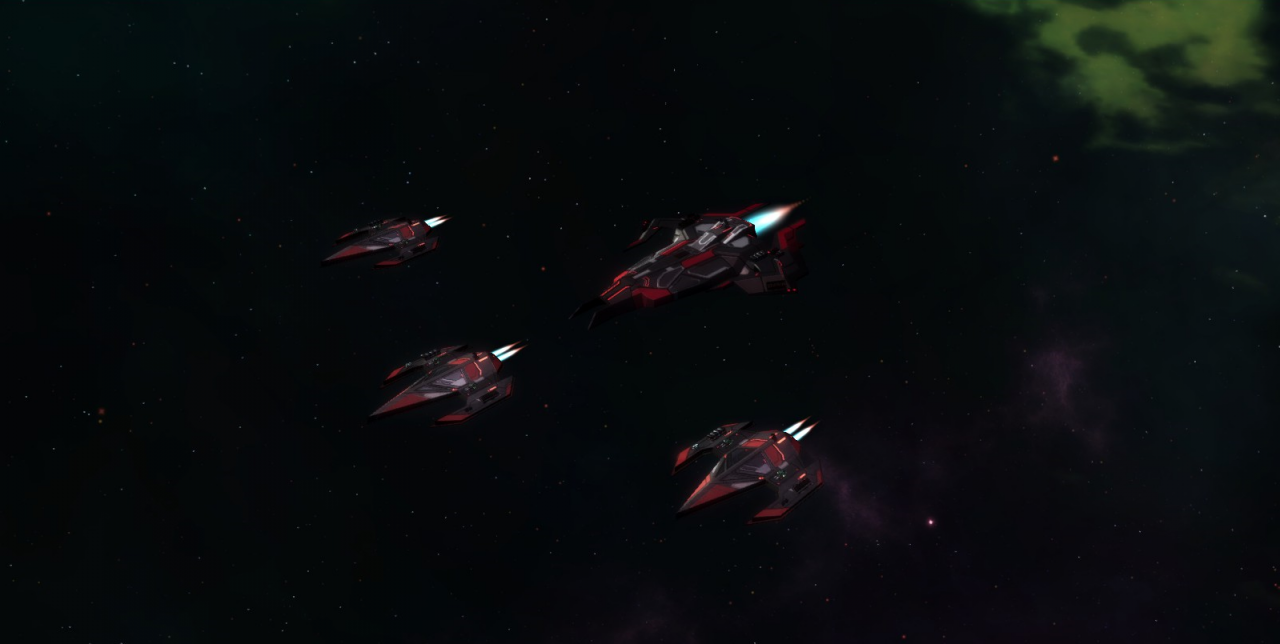
This second image is a bad example of a convoy; there aren’t enough combat ships to screen the freighters.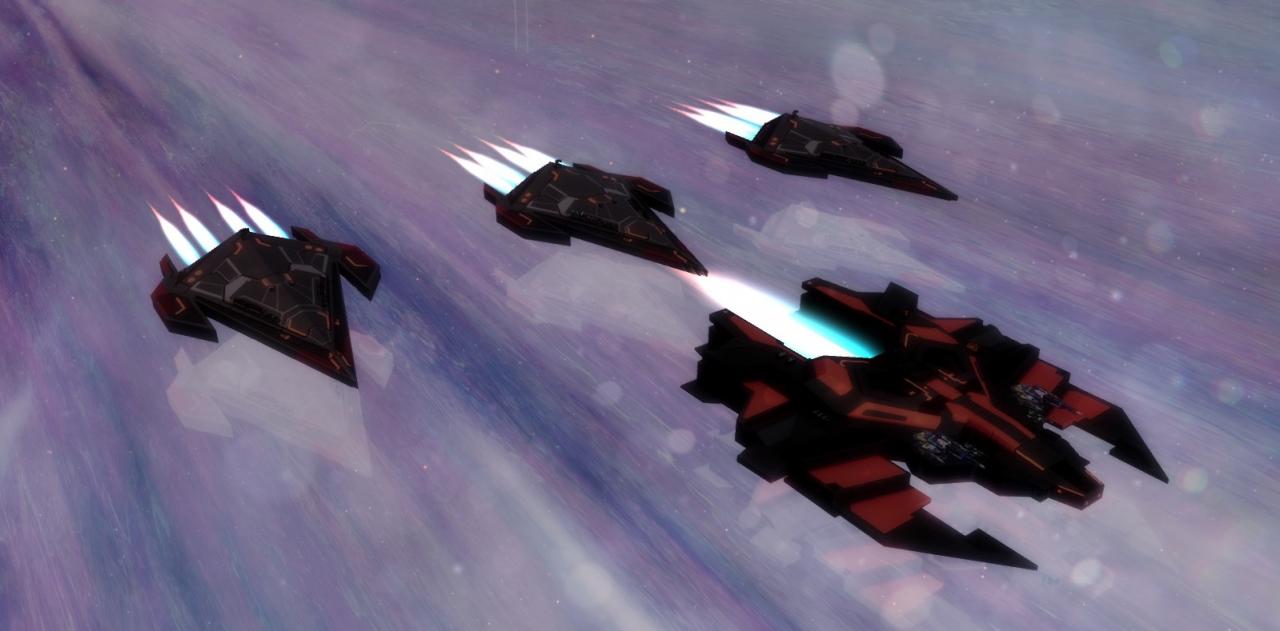
Including more armed ships for defence can fix this!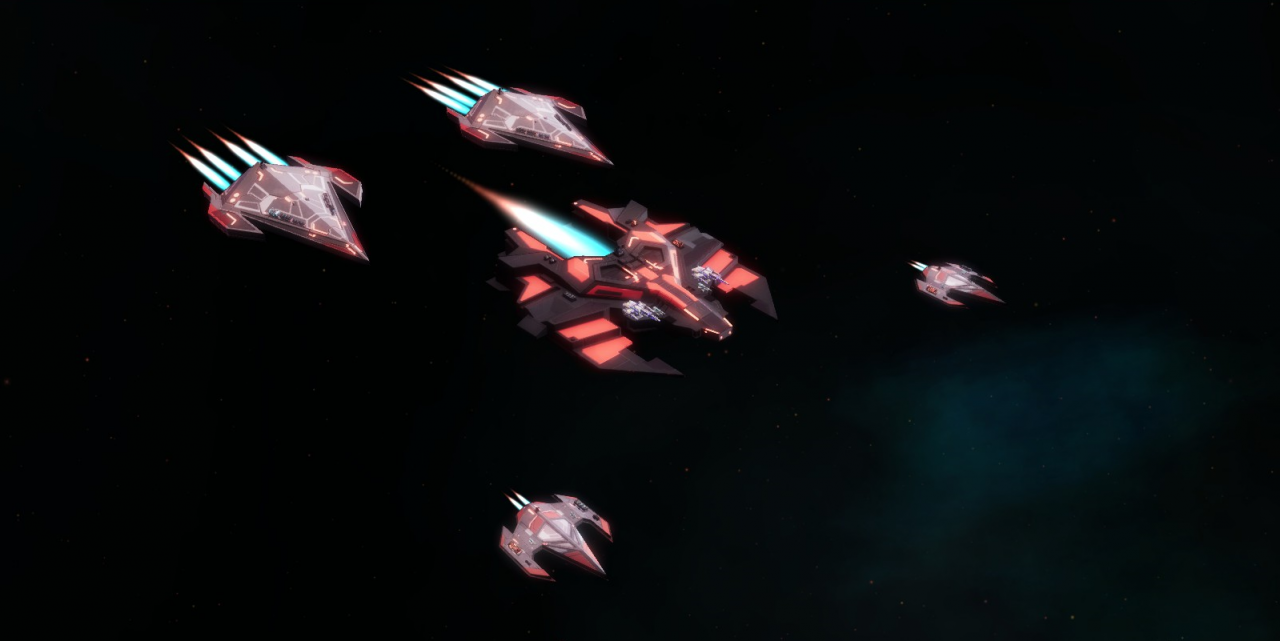
This is a larger convoy using Tier 2 vessels. The central Frigate uses missiles for indirect fire support.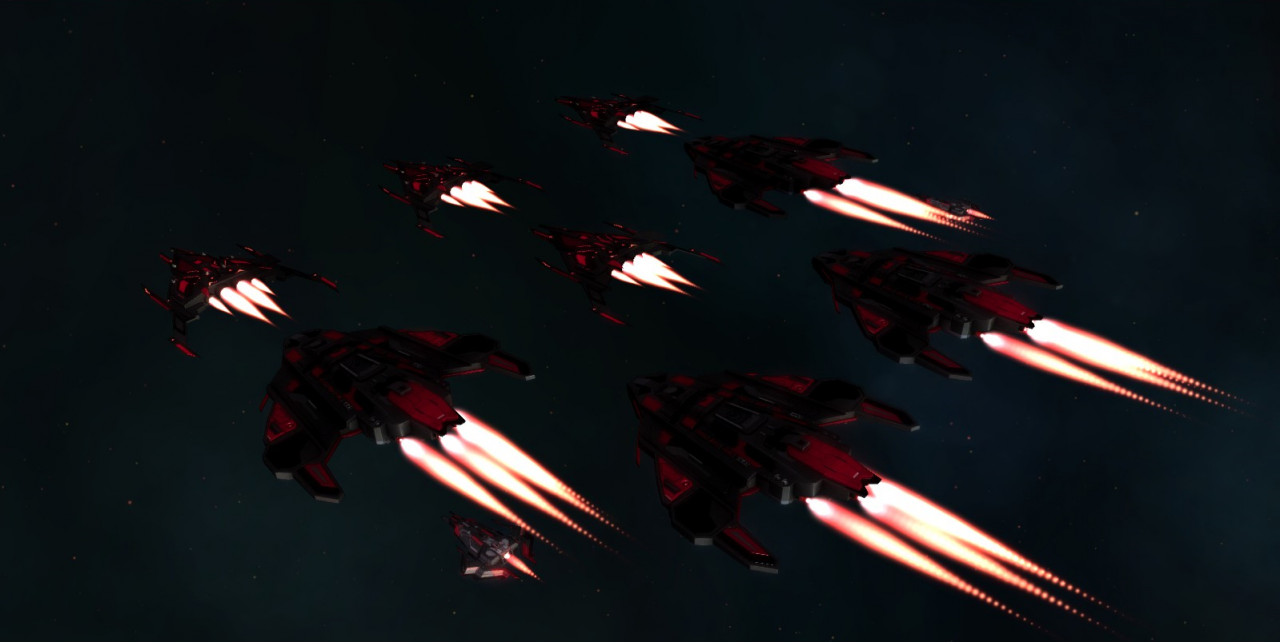
- Light the Touch-paper – When travelling between star systems, it is worth including at least some fuel capacity on your convoys. Simply put, shorter travel times means supplies are delivered more quickly, and there is less chance of your fleet being intercepted and destroyed. NPC Pirates only travel at Warp 1, so any boosted capability will allow you to leave them far behind. Other players may have unlocked better engines than you, but regardless, Boosted Warp might offer you a chance to reach the safety of your system, or to otherwise lose your attacker.
- Seeing is Staying Alive– all ships must have at least a Base Scanner fitted, allowing them to see in space. Planetary Scanners offer far greater coverage, but must be constructed on a planet the player owns. Players should use both of these together to keep an eye on the regions around their systems and fleets and spot any possible threats. In particular, new players should watch out for fleets of Corvettes – although small, when equipped with end-game technology, they can be very fast and well-armed ships, and therefore very dangerous to new players.
Upgraded scanners might allow you to see an approaching attacker before they are aware of your presence, allowing you to divert your convoys out of harm’s way – or set up a counter-attack. This advice cuts both ways; if you can spot an enemy convoy before they see you, you will be able to attack at the time and place of your choosing.
At higher levels, players will also have to contend with the possibilities of minefields and/or cloaked fleets, both of which require specialist ship-mounted equipment to spot. There are also some regions of space that scanners aren’t able to sweep, which brings us to… - Sweep your Orbits – When in a system you control, the fact that “it’s your system” can create an illusion of safety, which may not actually be the case. Fleets in orbit of an uncolonised planet are only visible to other fleets also in orbit of that planet. Players will generally not colonise every single planet in a system, meaning these neutral worlds can offer hiding places for pirate fleets, scouts belonging to other players, or worse. Hence, it is good practice to maintain at least one combat fleet in each system that you own, and to use it to regularly sweep through the orbits of all planets to root out any unwelcome guests you may have accumulated. This is also worth doing for systems you intend to colonise in the near future, in order to avoid any unpleasant welcome parties for your colonists.
- Thou Shalt Not Freak if Attacked – though primarily an empire-building game, warfare is a key component of Outscape. It is likely that you will have to contend with hostile player(s) sooner or later. Upon spotting a potential hostile, players should ask themselves:
- Is there one attacking fleet, or multiple?
- Could they have other fleets hidden elsewhere?
- If so, where could they potentially be hiding?
- If I fight them, do I have the forces to win?
- Does my enemy know where my fleets and systems are?
- Do they intend to fight me? It is always safe to kill NPC pirates, but shooting down another player’s unarmed scout is a sure-fire way to make a bad first impression. Players can check other player’s names on the leaderboards, in order to avoid accidentally provoking someone far stronger than themselves.
If the odds are too great, it’s okay to retreat. The admiral who spots and runs away lives to come back with more ships and pour Hellfire rounds into the opponent that made them run away.
- Don’t Go Back for Seconds – if the worst happens and you are successfully ambushed, don’t immediately return to the scene of the crime. Chances are your opponent will be hoping for exactly this – they will be able to reposition at a different planet orbit/system and simply launch a second attack. Instead, letting them sit on their hands might get them to become bored or impatient. They might give up and fly away, or come out and try to find you, potentially allowing you to set an ambush of your own!
You should hopefully be better equipped to survive the galaxy now. Fly safely – or good hunting!
